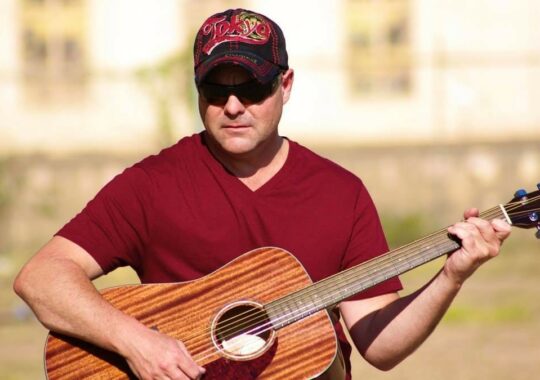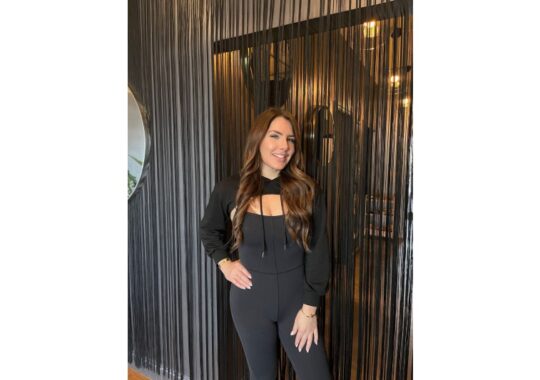DJ Ali Kavousi tells us these points from his own experience
Gradual increase and decrease of sound (feed)
In fact, most songs no longer have a gradual decrease or increase in volume, which used to be the rule. The last thing I remember about the gradual decrease or increase in volume in recent pop songs was the 2013 song by Rubin Tex, who performed “Blurred Lines”, you may remember other things as well. Still gradually decreasing or increasing as one of the DJ tools is one of the best ways to move from one song to another. This is your “release from prison” card. If you know how to turn down the volume of your song and move on to the next song, it means that you will never have trouble playing the next song and this assurance that it gives you is very valuable.
Gradually lowering the volume of one song manually tells the audience that the current song is over, so expect another song as soon as possible, which usually removes a large volume from the previous song, so that at the moment the next song starts, that song Is that it overshadows everyone. When the sound is reduced slowly and confidently, the control of the next song is in your hands and it tells everyone that you are in control. If you plan your songs well, you will find a perfectly acceptable way to move towards different types of DJs.
Decide where in your song the volume should gradually increase or decrease
Sometimes you do this because you played the wrong song and you want to apologize for it (hey, it happens), but it ‘s usually because you feel there is not enough song that is not over yet. And this is especially true when you play older music that everyone knows. The best way to gradually increase or decrease the sound (feed) is when a choir is performing, or even better, when the choir has a solo (a common way for composers to end their songs). Gradually reduce to finish). Everything will be better if the band, which also has a solo performance, makes a fundamental change in their performance (for example, getting out of the mood of “outdated” classical songs).
First increase the volume (sound) of the song, then do it slowly.
The wrong way to increase the volume is to ask people, “Should the volume have been increased here or not?” You have to be bold and immediately play a good piece of that song. In ten to fifteen seconds later, you can gradually change the (sound) of the song, it is now clear to everyone what is happening. If you turn up or down the volume right after the start of the song, for example in an octave track, you will want to actually use it at the end of the track so you can…
Start playing the next song with the first beat, and with the last beat, adjust your ending song.
Just as your previous track is skipping, press the (Play) button to play a new song, firmly and cleanly, adjust it right on the first beat of the track. It does not matter if it is a beat or not, just make sure you are at the beginning of the piece, so you respect the flow of the pieces together.
Also, it does not matter if the piece of music has a fast pace or even a different genre, the fact that making the sound of the song gradually decrease or increase is a great way to help you perform more interesting sets is that it passes genres and tempos with confidence. .
پبهپا
All you have to do is listen to the music on the radio long enough to get the right excuse. This simple mixing method is very rare in our modern style of pop music, which is changing, solo hip-hop that starts loudly and ends abruptly. This style of music is only useful to confidently change one song to another. Although, like anything simple, the trick is obvious to everyone, it takes more skill than you think to be completely successful.
Learn how to finish your current song
First of all, you need to make sure that you have a good Bikmokast ending for your song. Checking the shape of the waves on your screen can help, but I’ve found that in critical situations, I can load another version of the current song into the memory of an audio device so that when the first song is playing for the audience, it quickly goes through headphones. Listen to another version of that song to figure out how to finish my song (oh, I’m so glad I’re using digital because I can easily have two of everything). One day you will be sure about it…
Choose the next powerful and impressive song with an instant starting point.
A song, no matter how great it is in the performance, is not performed in such a way that it very fearlessly connects the end to the beginning of a very slow song that has no melody. You need something that starts with a loud voice. (Notice how on the radio there are often edited versions of songs that do exactly the same thing, or the DJ does it somewhere else instead of starting at the place where the full version of the song is. You may also want to consider doing this.)
When you ask your audience to deal with this exaggerated and bold change of song, it is possible that they will probably accept the new song immediately, so it is always good to decide and adopt the method.
Count the beats and endings of the ending song, and start your new song with the first beat
Make sure your new song is faster, so of course it can be heard. It is important to note that respect for the flow of music is the secret of the sauce, which mixes this seemingly random mix and ultimately allows you to survive. Counting beats and scores of one, two, three, four, two, two, three, four… opens the way to where you start playing a new song for both of them, and the key is to finish the first beat of the song at the end. . If the finishing song stops at a really random place (which seems unlikely), it means that you can not start the new song at the beginning of the four-eight scale, at least start it at the first beat, and at Count your mind to be silent if necessary after the song is over.
Cut
Unlike moving the song forward and gradually increasing or decreasing the frequency of the sound, both of which let your audience know that something is about to happen before it really happens (the first because the song is ending, the second because The reason why the sound of the song is weakening) is the cutting of an instantaneous mix – a clean cut from one song to another whose power depends on three things: timing (as always), choosing that in both songs, Where to change them, and the current songs you selected to get started. Do these things correctly, from now on you can happily mix all the songs all night with all the techniques you have learned so far.
Set your input track to a beat.
You should be able to start the song immediately in the 1000th second of your choice, right at the beginning of a piece of music, so that you can play your own beat (for more information on this beat, go to “Matching Beats, Part One: Timing See) and prepare it.
Start counting your beats, scores and tracks as you finish.
Look for a corresponding beat that, if achieved by adjusting your song, all the songs will be fine. Typically, look for the last part of the song where everything ends, and large lyrics, chords, interruptions, drops, curvature of notes, etc. are removed by the composer, so it feels like in some Scales, something else is emerging.
On the first beat of your selection, start playing your new song and quickly stop the ending song.
As you continue the natural flow of beats, scales, and pieces, you are practically moving from one song to another, going from a “… three, two three, four, four, two, three four” in the background of a song that is coming to an end. “One, two, three, four…”, but the latter affects the person, your old song is gone and the new song has replaced it.
Exactly how you do the above, of course, depends on your equipment. Dave used to use a real turntable and add new tunes with natural, timely rules, but with modern equipment, you simply press the stop button on one audio device and the start button on another device – sure Make sure the sound of the starting song is fully up in the mix.
Single piece percussion
And so, we come to the part where we talk about the middle ground, the bitcoin mix, which is so important to many DJs that they’re going to call it DJing. Become a master of this percussion and follow its steps, and in this case, everyone, including other DJs, will believe in the quality of your DJ group. (If you think the percussion parts are really hard, in the next chapter you will learn how you can use the “sync” function of your settings to make your work easier if you provide one.)
As always, the key to this technique depends as much on the timing and planning, but once you are sure that you have chosen the right song for the next performance, and you feel it is time to make it with a beautiful beat, You can use some of the techniques tested when they are popular with DJs around the world. We will start with a single piece to play, because they have chosen the term because you play both songs together for a piece of music that usually consists of four or eight beats.





